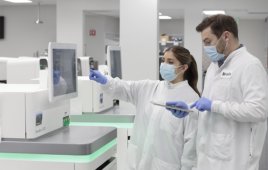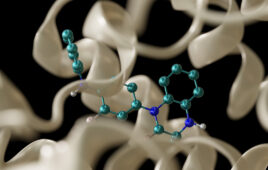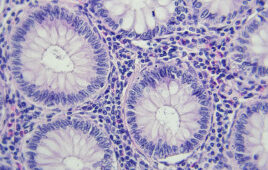A team from the University of Illinois has identified the unique metabolic activities of a 200-nucleotide-long RNA molecule in bacteria called SgrS. This molecule is one of about 80 known small RNAs common to many bacteria. It got its name for its role in sugar metabolism (SgrS is an acronym for sugar-related stress). When a bacterium such as Escherichia coli has taken up enough—or too much—glucose from its surroundings, SgrS helps stop the transport of glucose molecules across the cell membrane, said microbiology professor and principal investigator Carin Vanderpool.
In trying to tease out how SgrS performs this task, Vanderpool and technician Caryn Wadler discovered that the molecule performs dual roles, both of which inhibit the transport of glucose into the cell. One region of the RNA molecule binds to a messenger RNA to inhibit the production of new glucose transporters, while another region codes for a protein that seems to retard the activity of existing transporters. The findings appear online this month in the Proceedings of the National Academy of Sciences.
Release date: November 29, 2007
Source: University of Illinois at Urbana-Champaign
Filed Under: Genomics/Proteomics




